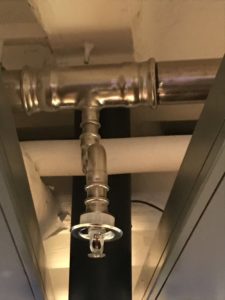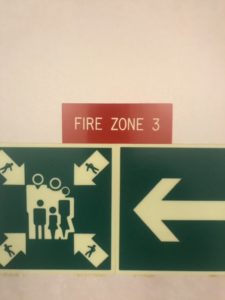Fire Protection for Boats

 Reading a story this morning, about a devastating boat fire in Baltimore, Maryland, today brought up the discussion on fire protection systems for boats. The codes typically require higher levels of fire protection in areas with high loss of life potential and for individuals that have difficulty with self-preservation.
Reading a story this morning, about a devastating boat fire in Baltimore, Maryland, today brought up the discussion on fire protection systems for boats. The codes typically require higher levels of fire protection in areas with high loss of life potential and for individuals that have difficulty with self-preservation.
These two areas of concerns are significant when we discuss passenger ships at sea with thousands of passengers aboard. The levels of protection must be high and include both passive and active life safety systems. Most of all it must be comprehensive in nature with all system working in coordination for the protection of those aboard.
Defining Fire Protection for Boats
In 1992, the International Maritime Organization (IMO), enacted amendments to the International Convention for the Safety of Life at Sea requiring both new and existing passenger ships to be equipped with fire sprinkler protection. Ironically, this life saving measure was counter for years for a lack of understanding of how fire sprinkler systems worked and the concern that activation of these systems would cause the sinking of ships. Hard to comprehend that the cruise industry argued that a 225,000 gross tonnage passenger ship could sink because of a simple fire sprinkler activation and that it outweighed the protentional loss of life from even a small fire.
Today’s modern passenger ships are comprised of quandary of fire protection systems from fire rated doors, emergency floor path illumination, International “Running Man” directional signs, Water Mist systems, early warning systems, smoke control and automatic damper/duct control systems to name a few.
Many of these systems are hidden for aesthetics but remain ready when needed. Along with all crew members being trained in basic firefighting with some members designated as a fire brigade. These fire brigades have limited training, equipment and are designed for basic offensive firefighting preformed from outside of enclosed structures when fire is beyond the incipient stage.
The primary purpose being obvious rescue and containment of fire. All these life safety measures in conjunction with fire sprinkler systems create a responsible level of safety.
 The keys to the success of fire protection for boats relies with the overall design and integration of systems as a total life safety system and the inspection testing and maintenance preformed on the systems. As with any structure, the focal point of protection is always fire sprinkler systems designed to provide occupants time to self-preservative, control or extinguishment of fire and increased survivability.
The keys to the success of fire protection for boats relies with the overall design and integration of systems as a total life safety system and the inspection testing and maintenance preformed on the systems. As with any structure, the focal point of protection is always fire sprinkler systems designed to provide occupants time to self-preservative, control or extinguishment of fire and increased survivability.
This coordinates with the compartmentation of fire and the abilities to egress passengers to open space allowing fire to be contained and extinguished. While all fire protection system relay on maintenance to keep them operational, the harsh environment of the oceans makes this task challenging not only on maintenance but reliant on specialty design.
This leads us into the world of stainless-steel systems and corrosion monitoring. While corrosion ways heavy on the ships that sail the seas, it is an area that can be easily overcome with systems built for these harsh conditions and proper maintenance programs.
The recent loss of 33 passengers in a dive boat fire off the cost of California has again renewed the debate for better fire protection for boats. Once again being unable to self-preservative without some of the fire protections system currently required in their larger counterparts.
For over a century, the National Fire Sprinkler Association (NFSA) has served as the voice of the fire sprinkler industry. Our mission: advocating to protect lives and property through the widespread acceptance of the fire sprinkler concept. To join NFSA or learn more about the ways membership can benefit your organization, visit nfsa.org/join.
